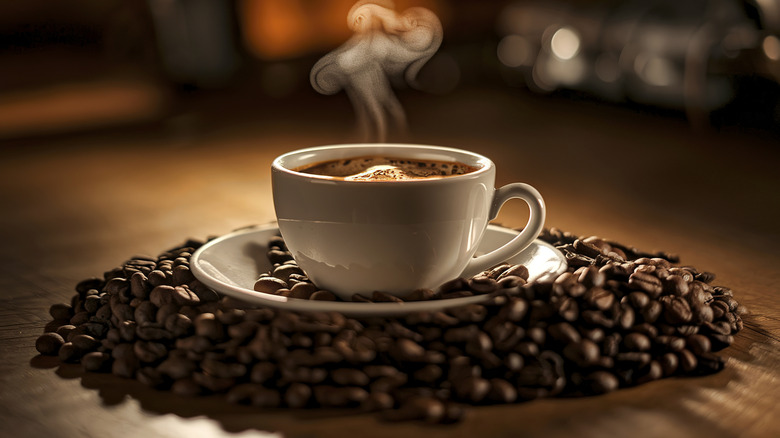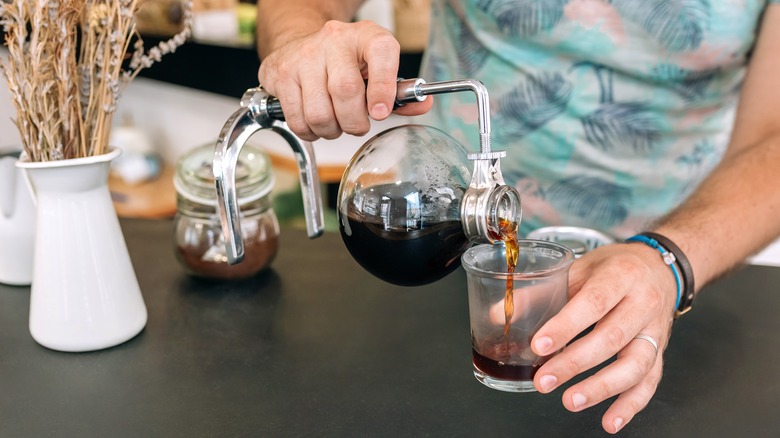The Old-School Way To Make Coffee Like They Did In The Early 1900s
We may receive a commission on purchases made from links.
When it comes to preparation methods, few beverages offer the range and variety of coffee. Whether it's crafting a quick latte or cappuccino with the press of a button or patiently waiting for the hours-long Kyoto-style cold drip, it's remarkable how many techniques exist to produce distinct coffee beverages. Not to mention, brewing methods have evolved over time — the modern espresso machine, with its electric pump, only became popular in the 1960s, after all.
If you're wondering how people brewed coffee a century before the modern machine, consider the coffee siphon. A brewing method that's still around (though often overlooked), this device resembles something out of a science lab. Once you get attuned to its nuanced style, however, you'll produce a richly flavorful cup reminiscent of a pour-over crossed with a French press. Siphon coffee delights with a rich body and sharp, clearly defined flavors.
Impressively, early versions of the siphon date back to the 1830s, making it a century older than the easy-to-care-for Moka pot. By the 1910s, baristas were already tailoring grind sizes and filters to extract the most from this method. Since then, its unique immersive brewing style has continued to captivate certain coffee enthusiasts. While the physical mechanics can be tricky, the payoff is a cup unlike any other.
Siphon machines have a few quirks
Although such brewers aren't the most popular modern option in the U.S., the method is far from extinct. Many coffee connoisseurs love siphon machines, and cafes in regions such as Japan still serve the brew regularly. So why hasn't the technique achieved widespread popularity? The answer lies in a few quirks.
First, the setup is relatively fragile. Unlike the industrial, consistent espresso machine, the siphon relies on two delicately balanced glass chambers suspended over an open flame. Without coffee in place, the device can overheat water, leading to boilovers — which is why it's best to start with hot water from a kettle. Once brewing begins, you must stir the coffee in the upper chamber. To finish, you quickly slide away the heat source to separate the grounds. All of this requires precise timing and coordination, making the process prone to mishaps.
Then there's the cost. A 1918 sales clipping listed siphon prices from $80 to $400 in modern currency (per Coffee Geek). While some models today are cheaper, high-quality ones can still cost over $100 — far more than other immersion brewers like the Aeropress or French press. Ultimately, the siphon's appeal lies in its striking design, distinctive flavor profile, and rich history. If you want to experience it for yourself, consider investing in a model like the storied Hario coffee siphon.


